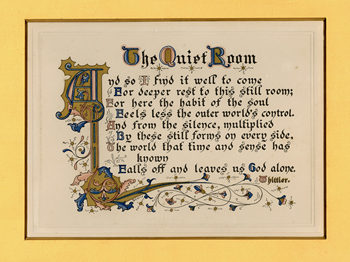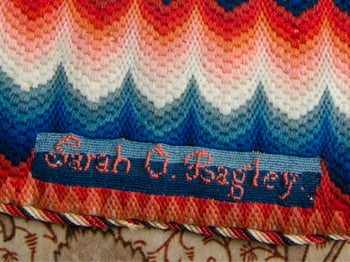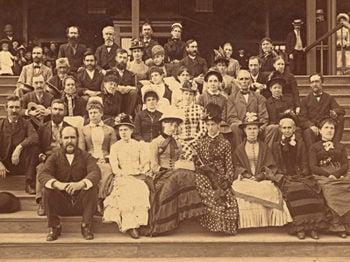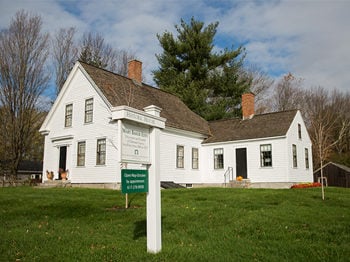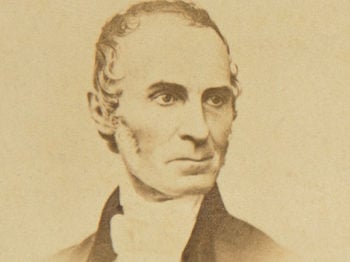OF THE FIVE HISTORIC houses maintained by Longyear Foundation because of their association with Mary Baker Eddy, none embodies more fully the social and economic atmosphere surrounding Mrs. Eddy in the 1860s than does the Squire Bagley House at Amesbury, Massachusetts. Mrs. Eddy, then Mrs. Mary B. Glover, was a guest at this house on two occasions: first , in the summer and early autumn of 1868; and second, for a few weeks in the spring of 1870.
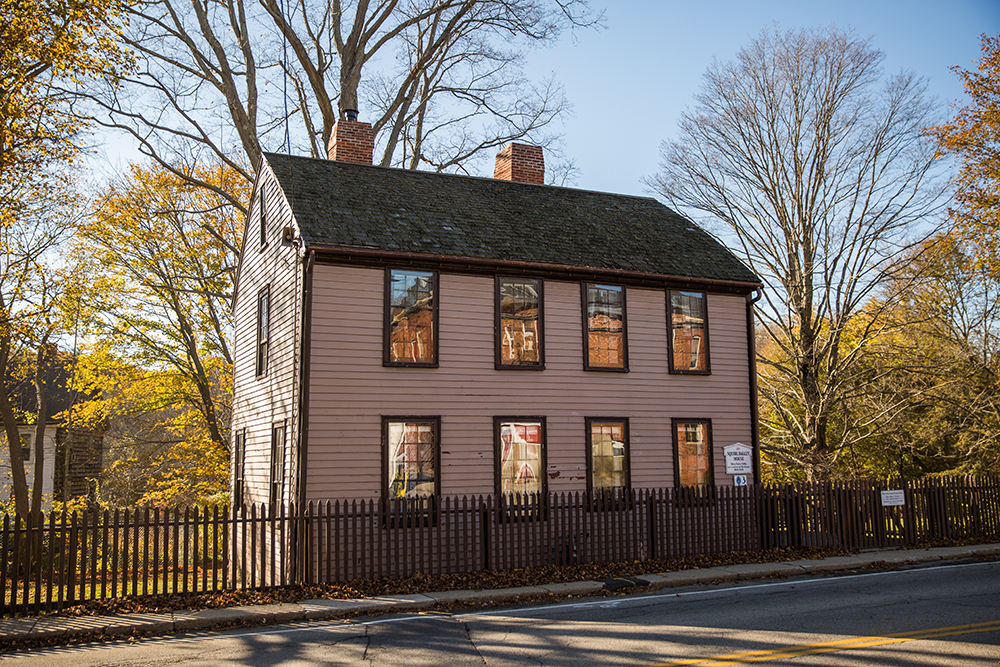
At the suggestion of Quaker friends in Lynn, Mrs. Glover had first come to Amesbury, home of the Quaker poet, John Greenleaf Whittier, in search of a quiet place to study and write. This was in September 1867. She found lodgings with kindly Mrs. Nathaniel Webster in a large, comfortable house near the Merrimack River ferry. For ten months she lived there, devoting her time to the study of the Scriptures and searching for the scientific truths, which she realized must underlie all biblical teachings. She wrote down answers which came to her through prayer and inspiration and these notes took form in her first teaching manual, The Science of Man. She placed an advertisement in the July 4, 1868 issue of the Banner of Light, a spiritualist paper published weekly in Boston, and which she had often seen at Mrs. Webster’s during her visit there. In her advertisement, she offered to teach students how to heal without medicine, electricity, or other physical means. Her great desire was to impart to others the truth of spiritual healing which she had experienced.
In early summer she was obliged to seek other lodgings, and thus she came to Miss Sarah Bagley who lived only a little more than a quarter-mile from the Webster house. In her move she was assisted by Richard Kennedy, a youth of nineteen years, who had become much interested in the healing possibilities of Mrs. Glover’s ideas. Miss Bagley and her widowed mother welcomed Mrs. Glover warmly and in the quiet sanctuary of their home, Mrs. Glover was able to continue her work without interruption.
She occupied a bright, airy room on the second floor overlooking a narrow thoroughfare which led through the Ferry District of Amesbury to the ferry and docks. It is reported with authority that a policeman in the area, seeing Mrs. Glover daily at her desk near the window said, “Never did I see a lady write so fast and so much.” Mrs. Glover numbered the pages which dropped to the floor.
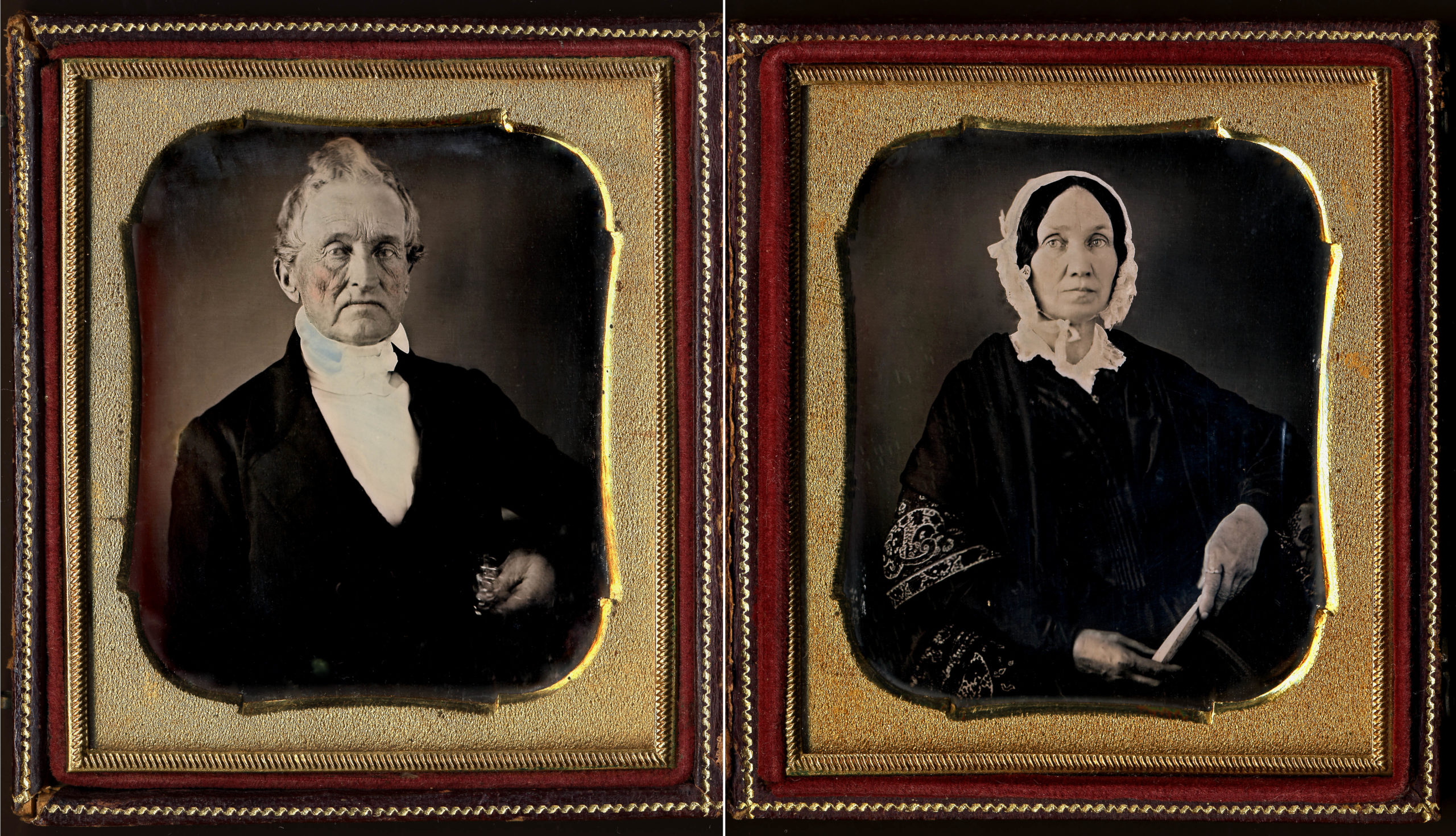
Just when the Lowell Bagley House was built is uncertain. One report gives the date of 1784, but this seems a confusion with the birth date of Lowell, who is said by the same writer to have built the house. Lowell was the son of Isaac Bagley, fourth in direct line from his English-born ancestor, Orlando Bagly (sic), who settled in Amesbury in 1642. It is possible that Lowell built the house a year or two before his marriage in 1811 to Sarah Osgood, a lady of substantial Amesbury lineage. It seems more probable that about this time he refurnished the original house built by his father, giving to the interior an early eighteenth century appearance which has survived to the present time. His father may have, in the tradition of an ancestor, divided his property among his three children during his lifetime, giving to Lowell, the eldest, the homestead. The two families apparently lived together until 1826, when the father moved to a house next door. This division of property would account for the fact that Lowell Bagley always spoke of the Bagley House as “my house.”
Today the original part of the house stands close to the street and consists of two stories and an attic, with two rooms on each floor. The unusual bowed roof is supported by bowed oak beams which are thought to have been salvaged from a schooner wrecked on the nearby coast. The present side entrance to the house, which seems architecturally out of place may originally have been at the rear corner, opening into the small stairway hall. The present doorway was finished on September 25, 1826, and possibly the large kitchen and borning room were added about this time, necessitating the removal of any door that might have been on the rear end of the house.
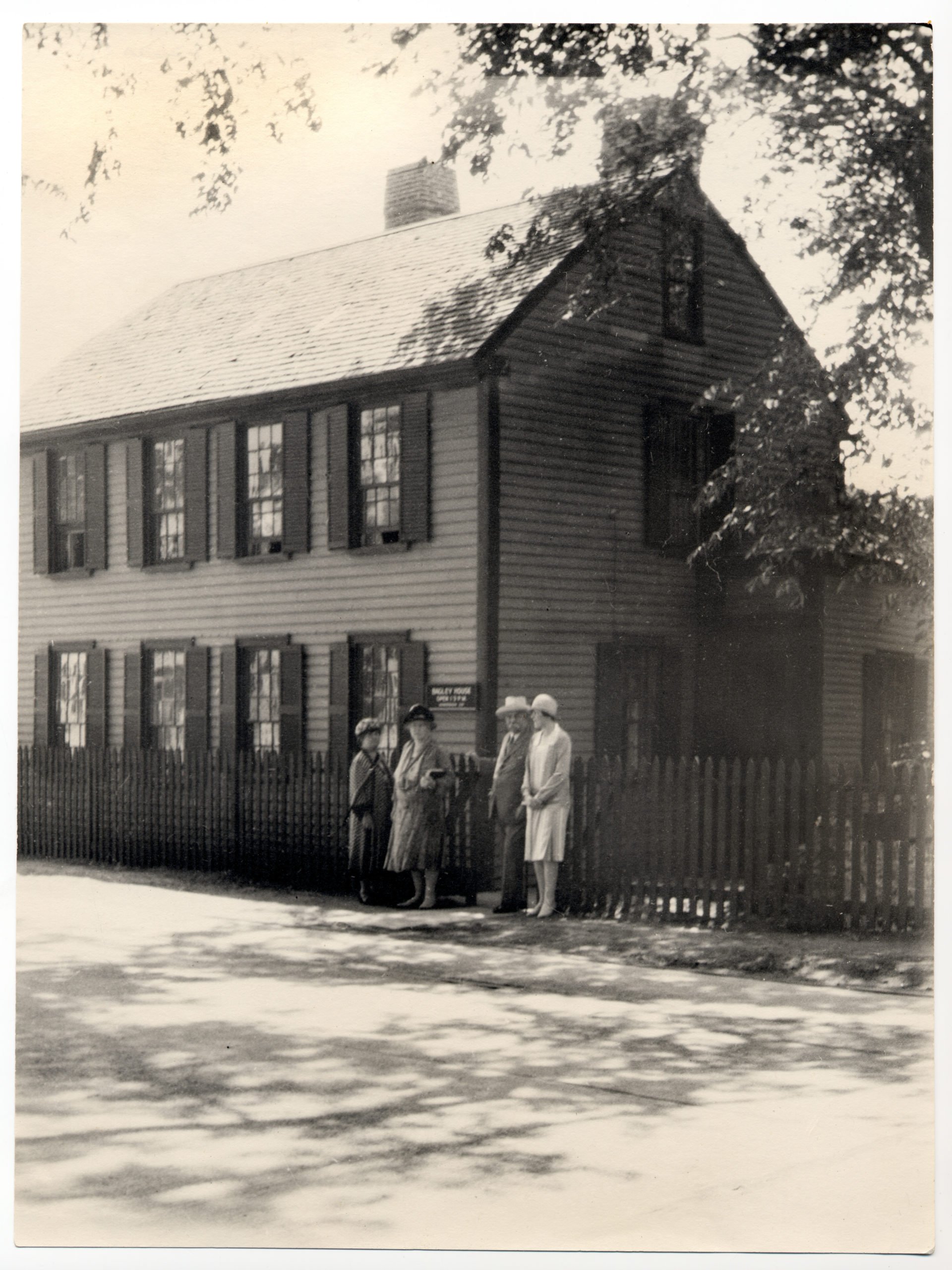
Esquire Lowell Bagley, a gentleman of good inheritance, was gifted with a generous heart and an observing eye. At the age of thirty-five, in 1819, he began keeping a diary, and with few lapses, he made brief daily entries in it for over thirty years. When Mrs. Mary Beecher Longyear acquired the Bagley House in 1922, she discovered the diary in an old trunk, well preserved. So succinct, inclusive, and impersonal are these records that one could almost reconstruct the life of the community in those years. He made a veritable chart of the wind in his day-today entries, and noted such unusual occurrences as an earthquake, a brilliant display of the aurora borealis on January 25, 1837, from 6 to 9 P.M.; also the first steamboat on the Merrimack in 1829; and on July 4, 1836, the flight of a balloon over Amesbury at an altitude of 1,000 to 1,200 feet. He watched a man walking on the bottom of the Merrimack River in 1841, having his supply of air provided by a new invention in a surface boat.
Squire Bagley served his community in many public posts — as selectman, moderator, Justice of the Peace for twenty years, as chairman of many community committees, and as a delegate on special committees appointed to welcome General Lafayette and President-Elect Jackson on their visits to the area. He was Representative to the State Legislature for several terms. His main source of income, however, was from his work as justice and conveyancer, in writing and executing wills, settling disputes over estates, and aiding his fellow citizens and those in nearby towns, in adjusting property problems. He never engaged in industry although this was one of the chief sources of wealth in the community. Factories for the making of leather goods, shoes, hats, carriages, and other commodities flourished, also ship building. He kept a general store, opening it at his convenience, and he records purchases at prices which make for nostalgic reading.
He was a generous provider for his family and he tells us of the purchase of a leghorn hat and a piece of silk velvet for his wife, also gloves and slippers for his three little daughters. They had many outings together at the shore and in the hills, and made visits to nearby towns. On one occasion he took his wife to a ball in South Hampton, celebrating the election of Andrew Jackson as President. He was a thrifty man, and seemingly, an indefatigable one. He utilized the eight or ten acres of land adjacent to his house to raise potatoes, vegetables, apples, and pears for family use. He did much of the planting and harvesting himself and looked after a cow, raised an annual calf for sale, fattened a pig for winter slaughter and simultaneously kept the house and outbuildings shipshape. He never owned a chaise, but depended on renting one when needed. At the end of each year, he always balanced his resources and added that he was “clear of debt.”
His wide interests, shared by his family, attracted many to his hospitable fireside . Books, good conversation, current magazines, experience, and a lively wit lent an atmosphere of culture and urbanity which lingered after the Squire’s passing in 1863. When Mrs. Longyear acquired the house in 1922, it was practically unchanged from the time Squire Bagley and his family lived there. It has had no basic alterations since 1922. Many pieces of furniture that Mrs. Eddy must have used are still there, among them the old harmonium and flowered carpet in the “Garden Room.” This carpet was presented in 1829 to Mrs. Bagley by Mary Ann Fowler, the Squire’s niece and ward, whom he and Mrs. Bagley had brought up. She came into her inheritance in 1829, at twenty-one years of age, and made a gift of $50 to Mrs. Bagley who used half of it to purchase this carpet. Squire Bagley left a much smaller estate than had been expected and his daughters, Mary and Sarah, turned first to teaching then to a hat shop in the home to supplement their income. With the passing of Mary, Sarah occasionally took paying guests.
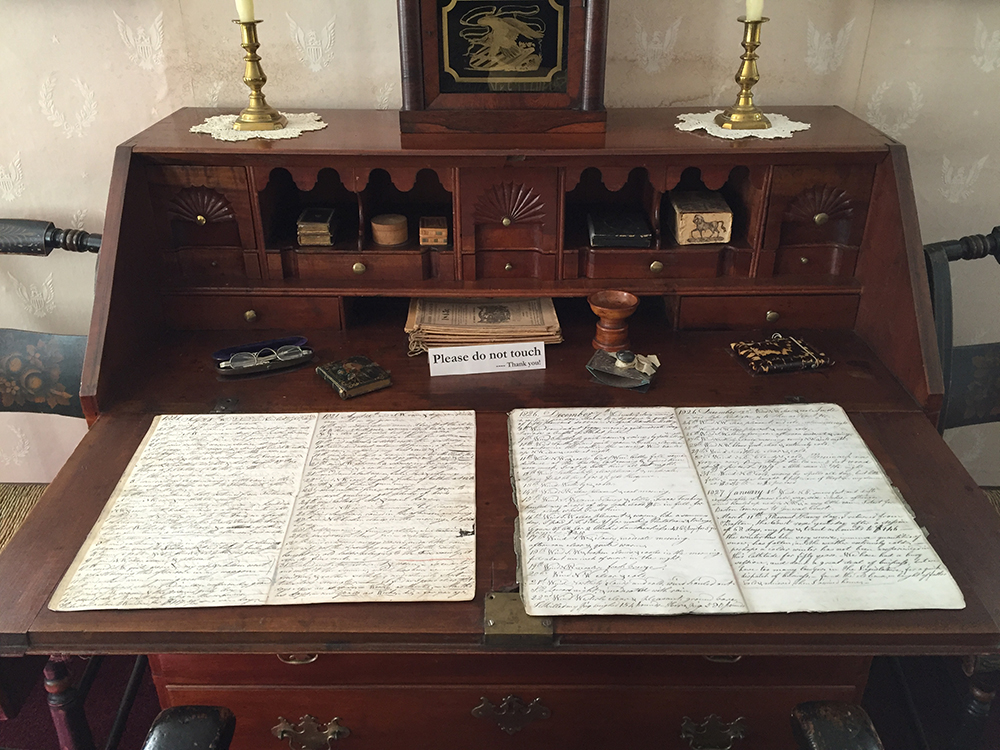
Mrs. Glover remained with Miss Bagley and her mother for about two months. By September, however, she was again in Stoughton at the urgent invitation of Sally Wentworth, whose daughter she had healed while living with Hiram Crafts. Richard Kennedy kept in touch with Mrs. Glover by letter and by occasional visits to Stoughton. A partnership plan began to take shape and her return to Amesbury in March 1870 had a two-fold purpose.
She wished to prepare young Richard Kennedy for his entry into Lynn, where they proposed to start, and to give Miss Bagley further instruction in healing which she was about to undertake.
Richard Kennedy was staying with the Bagleys when Mrs. Glover arrived, and many were the discussions which he and Sarah Bagley had that spring with Mrs. Glover on metaphysical healing. By this time, Kennedy had made up his mind to give up his position in a box factory and to join Mrs. Glover in her more challenging call of establishing a system of healing. They left Amesbury on May 13, 1870, for Lynn where they opened the first center for metaphysical healing and teaching in rooms rented from Miss Susie Magoun who ran a school for children in the same building. Meanwhile Miss Bagley had begun to make a place for herself in Amesbury as a metaphysical healer, and for the next twenty years, she supported herself by this work.
Amesbury had played out its early part in the emerging Cause of Christian Science. It had sheltered the Discoverer and Founder in one of the critical periods of her life, and had allowed her to begin in quietness her first teaching manual, The Science of Man, which she completed at Stoughton in June 1869. In 1870, she was able to consummate plans for introducing her teaching to the public, utilizing her teaching manual. She had begun laying the foundation of her great movement.
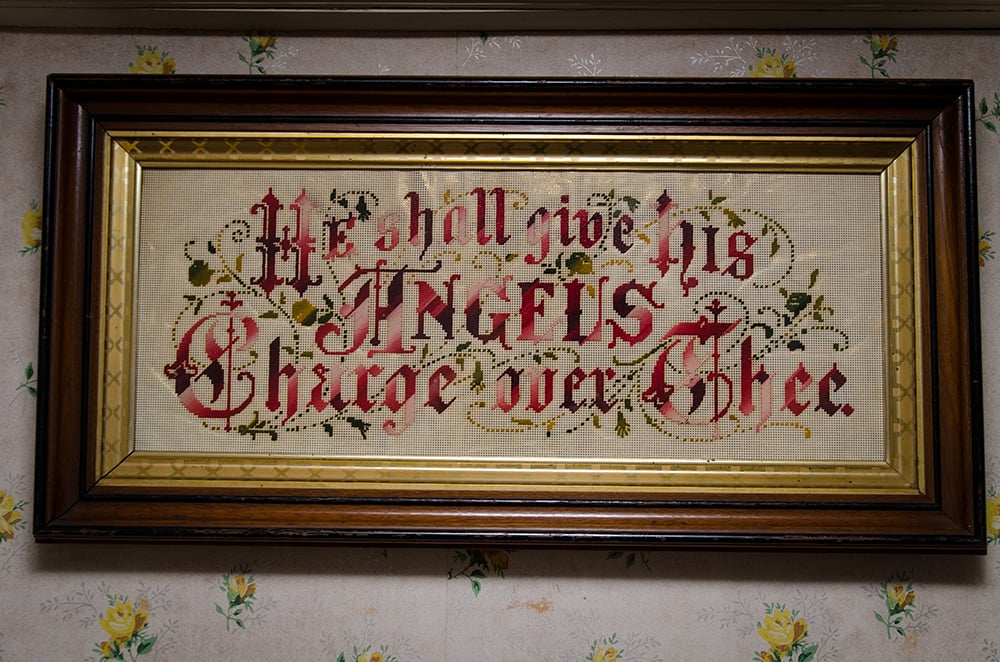
Notes
This article was originally published in the 1968 winter Quarterly News.
